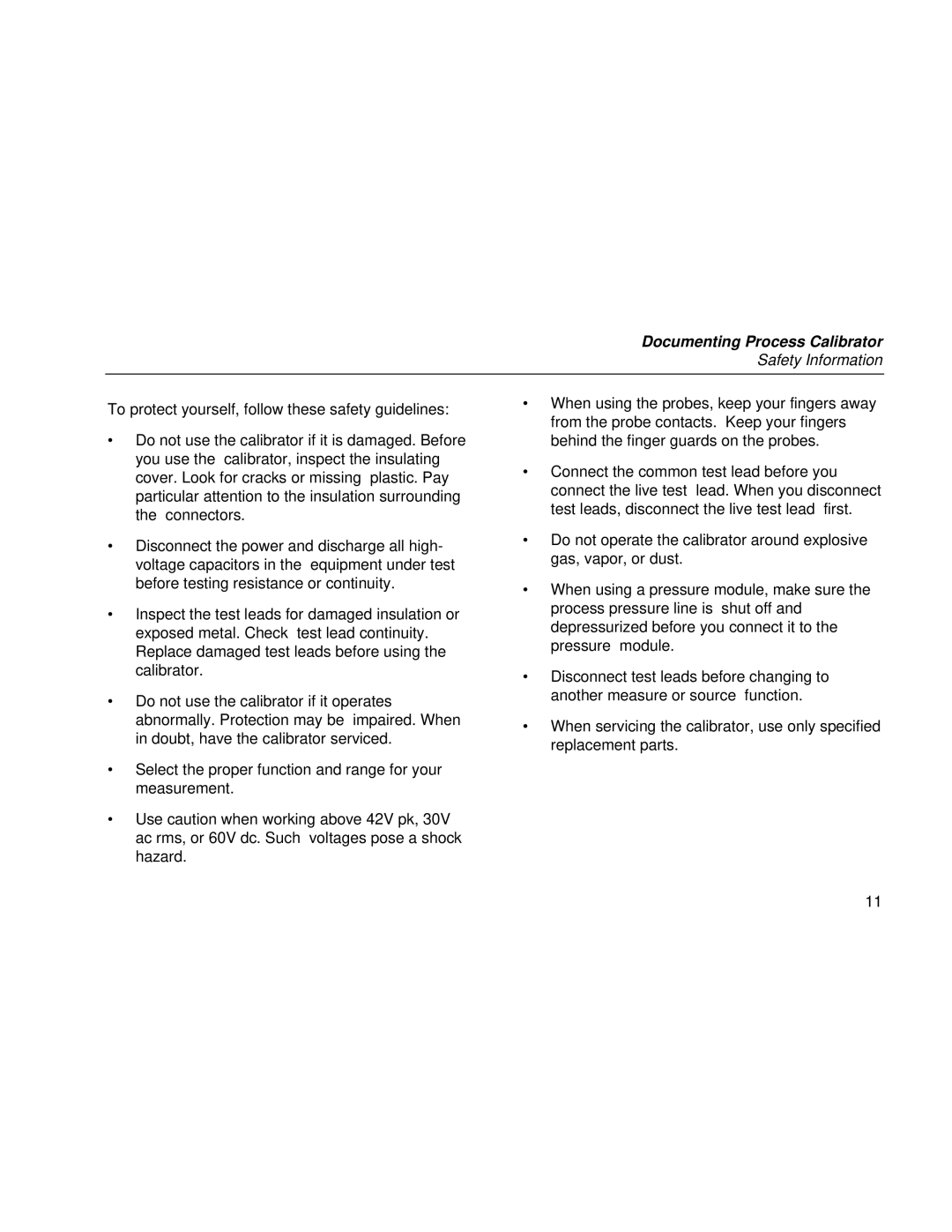Documenting Process Calibrator
Safety Information
To protect yourself, follow these safety guidelines:
∙Do not use the calibrator if it is damaged. Before you use the calibrator, inspect the insulating cover. Look for cracks or missing plastic. Pay particular attention to the insulation surrounding the connectors.
∙Disconnect the power and discharge all high- voltage capacitors in the equipment under test before testing resistance or continuity.
∙Inspect the test leads for damaged insulation or exposed metal. Check test lead continuity. Replace damaged test leads before using the calibrator.
∙Do not use the calibrator if it operates abnormally. Protection may be impaired. When in doubt, have the calibrator serviced.
∙Select the proper function and range for your measurement.
∙Use caution when working above 42V pk, 30V ac rms, or 60V dc. Such voltages pose a shock hazard.
∙When using the probes, keep your fingers away from the probe contacts. Keep your fingers behind the finger guards on the probes.
∙Connect the common test lead before you connect the live test lead. When you disconnect test leads, disconnect the live test lead first.
∙Do not operate the calibrator around explosive gas, vapor, or dust.
∙When using a pressure module, make sure the process pressure line is shut off and depressurized before you connect it to the pressure module.
∙Disconnect test leads before changing to another measure or source function.
∙When servicing the calibrator, use only specified replacement parts.
11
